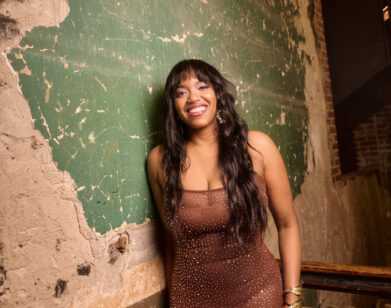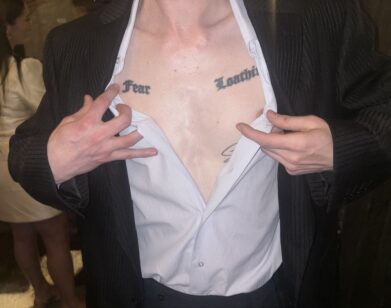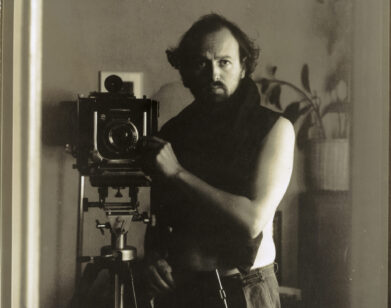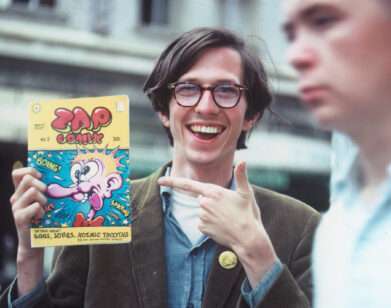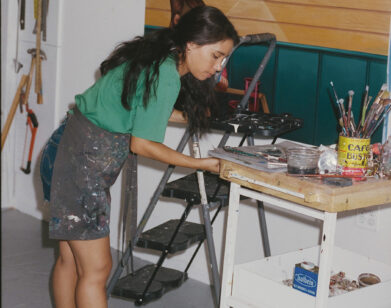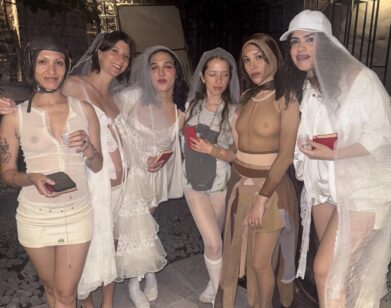Linda Yablonsky
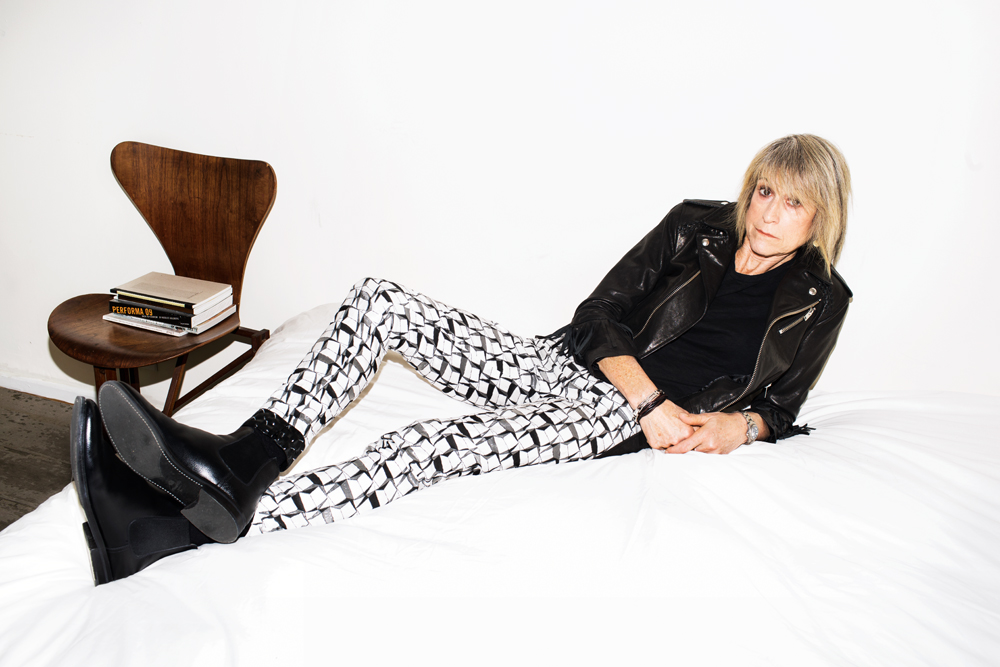
LINDA YABLONSKY AT HOME IN NEW YORK, OCTOBER 2014. JACKET: IRO. PANTS: CHANEL. T-SHIRT AND SHOES: YABLONSKY’S OWN. STYLING: ANDREAS KOKKINO. COSMETICS: MARC JACOBS BEAUTY, INCLUDING SKY LINER PETITES HIGHLINER IN MIDNIGHT IN PARIS, AND TWINKLE POP EYE STICK IN VOLVER. HAIR: DAVID VON CANNON/STREETERS.
Linda Yablonsky tells us how she came to writing about art:
“I came to New York in 1966, hungry for every kind of experience the city had to offer. And it had everything imaginable. As a theater student at NYU, I went to Broadway, off-Broadway, and off-off-Broadway shows every week, and Max’s Kansas City or other bars the rest of the time. I was also a relentless reader of alternative newspapers and magazines, chiefly The Village Voice (it had the best writers), Rolling Stone, and … Andy Warhol’s Interview. At some point, probably after I switched my major to English Lit, I started picking up art magazines. Conceptual art and process art totally mystified—and tantalized—me. So much so that in 1971, the first and only play I wrote (for an experimental theater group) was about an artist who made sculpture out of the detritus of his life and refused to sell it, so the market couldn’t corrupt it or him. I had no idea what I was doing. (It was a musical.) Looking back, it seems I understood more than I thought, and was more involved in art than I realized.
“Thirty years would go by before I started writing about art. For ten of those years I wrote virtually nothing, an act of self-betrayal that I do not want to repeat. In that time, I went to shows in galleries, museums, and nightclubs. (In the ’80s, downtown clubs patronized by artists were alternative exhibition spaces.) When I started writing again (short stories only), I was as hungry for action as ever. After such a long hiatus from my own voice, I needed to stretch my chops. So around 1992, I jumped at a chance to write reviews for Artforum, even though I felt intimidated by the subject. After all, I was trained to be a playwright. Communicating a visual experience to people who couldn’t see it was an enormous challenge. It put me out of my depth. Which is very good exercise.
“For each review, I had to do voluminous research, but I also learned by talking to artists, whom I had started meeting socially in the ’70s and discovered that I felt most at home with them. One was the mother of a close friend, Sylvette Meyer, a bohemian niece of Helena Rubinstein and a painter. After my mother died (I was 25), I sort of adopted Sylvette as a substitute. Once a week she went to galleries or museums, and I went with her. I remember following her around a Joseph Beuys retrospective at the Guggenheim. Looking at it through her eyes, I was fascinated—and hooked on art. I added it to my pursuits in theater, film, music, and literature. I’m lucky to have arrived in New York when it was Fun City, and everyone could do everything and go everywhere and feel part of something tremendous without fear, even though it was dangerous. (Before I turned 30, I had already outlived many friends. And this was before AIDS, which decimated my generation.)
“I had a bit of a wasted, high-risk youth, but I don’t regret it. Experience is material. If you can wrestle it into a story, you can find wisdom in it. That’s my art.”

